PINOCCHIO (2022)
A father's wish magically brings a wooden boy to life, giving him a chance to care for the child.
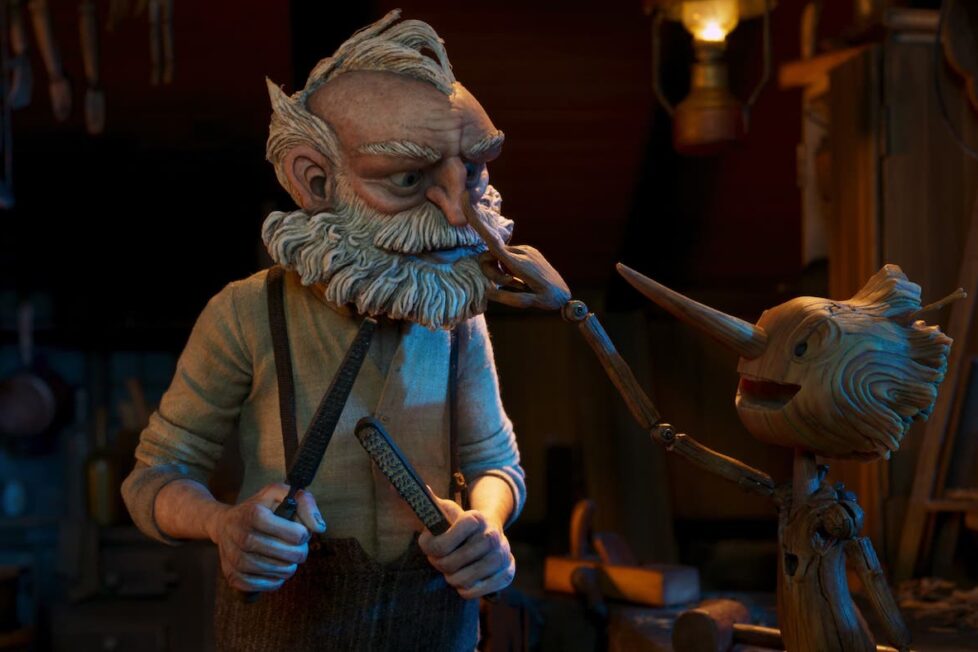
A father's wish magically brings a wooden boy to life, giving him a chance to care for the child.


“I want to tell you a story. It’s a story you may think you know, but you don’t.” This line reverberates throughout Guillermo del Toro’s Pinocchio. Carlo Collodi’s original children’s novel from 1883, The Adventures of Pinocchio, has captured the imaginations of several generations and has been adapted many times before. While most iterations since Walt Disney’s classic Pinocchio (1940) have been rather forgettable, del Toro’s new interpretation of the classic tale is an immaculately crafted tribute to the source material. Although they both share obvious similarities, they also couldn’t be any more different from each other. Deriving inspiration from Collodi’s original fairy tale instead of Disney’s more famous interpretation, the filmmaker transforms a classic fable into a deeply affecting story about the imperfect love between father and sons. Combining his dark idiosyncrasies with stop-motion animation, Pinocchio is a surprisingly profound portrait of life and death.
Narrated by Sebastian J. Cricket’s (Ewan McGregor) melodious tones, the story takes place in Italy during the reign of fascist dictator Benito Mussolini. Gepetto (David Bradley) is a respected resident of an idyllic Tuscan village and a devoted feather to his perfectly lovely son Carlo (Gregory Mann). However, a tragically early death strikes when Geppetto adds the final touches to the local church’s grand crucifix with his boy and, several years later, Geppetto chops down the tree that once grew over his son’s grave in a drunken stupor. Determined to bring Carlo back, he shaves and chisels the wood into a marionette facsimile of his lost child. After passing out, a Wood Sprite (Tilda Swinton) appears and, taking pity on the grieving father, imbues life into Geoptto’s wooden creation and charges Sebastian with guiding him on the path to goodness, with the insect agreeing to become Pinocchio’s conscience if he’s promised a wish for his troubles. Once Geppetto meets Pinocchio, he forces him to stay home away from the townsfolk, but the innocent wooden boy ends up being exploited by Count Volpe (Christoph Waltz) as a carnival attraction, while the town’s government official Podestà (Ron Perlman) wants to turn Pinocchio into a soldier.
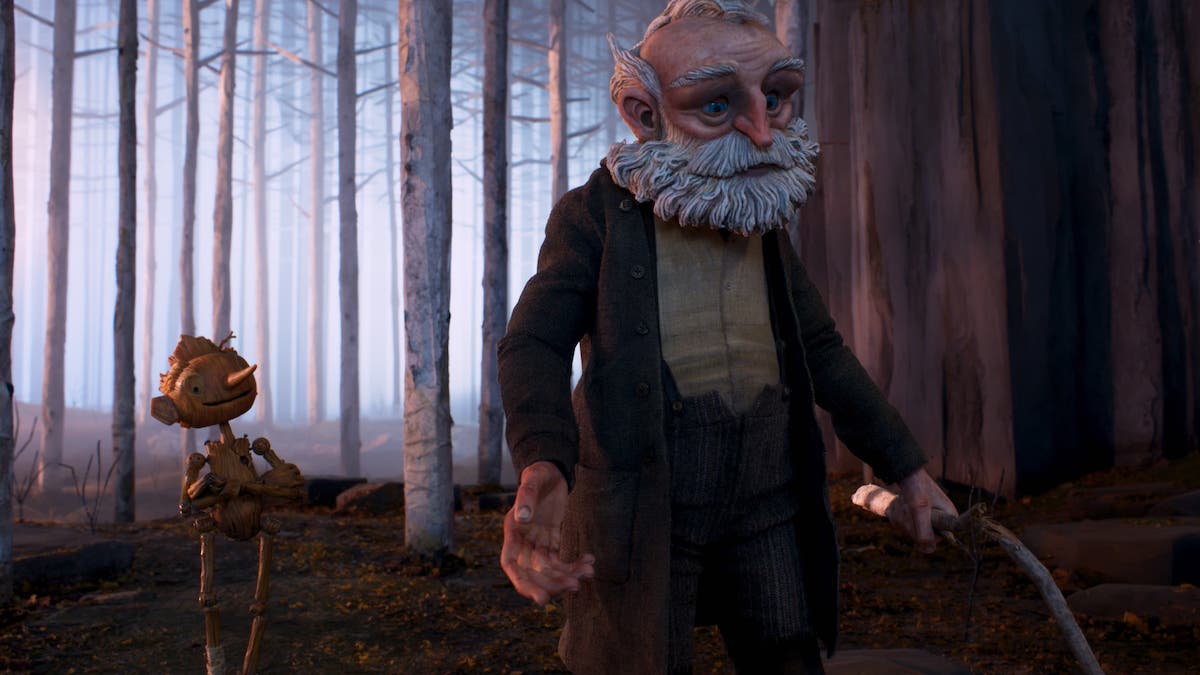
The highly electric and diverse cast breathes wonderful life into Collodi’s literary creations. After Tom Hanks’ lifeless portrayal of Geppetto in Robert Zemeckis’s Pinocchio (2022) this same year, David Bradley (After Life) delivers a heartbreaking performance as the grieving father. His grumbling warm voice matches the character’s emotions perfectly and only makes the moments of sweetness and love more impactful. Opposite him, newcomer Gregory Mann perfectly counterweights the darker moments with a boisterous enthusiasm that’s incredibly endearing. The young actor truly captures the innocence of the eponymous character. Watching Pinocchio experience everything for the first time and constantly question the world’s conventions is a particular highlight. Whether he’s prancing around Gepetto’s home breaking random objects or bursting out of a coffin to greet a group of pallbearer rabbits, the young actor’s energy is infectious.
The star-studded ensemble is remarkably well chosen with each actor seamlessly slipping into their role. Christoph Waltz (No Time To Die) and Ron Perlman (Drive) make perfect villains. As circus impresario Count Volpe, Waltz is an amalgamation of the Fox and Stromboli/Mangiafuoco from Collodi’s text; while Perlman makes for a scary fascist government official. They both embody different threats to Pinocchio’s quest as he discovers what humanity really means. Even the smallest of characters have incredible talents behind them, from Cate Blanchett (Nightmare Alley) giving a delightful and soulful performance as Count Volpe’s simian sidekick, Sprezzaturan (with her various shrieks and cackles being just as menacing as the character’s owner), to Tilda Swinton (Three Thousand Years of Longing) using such an alluring voice as the blue Wood Sprite and her sultry sister.
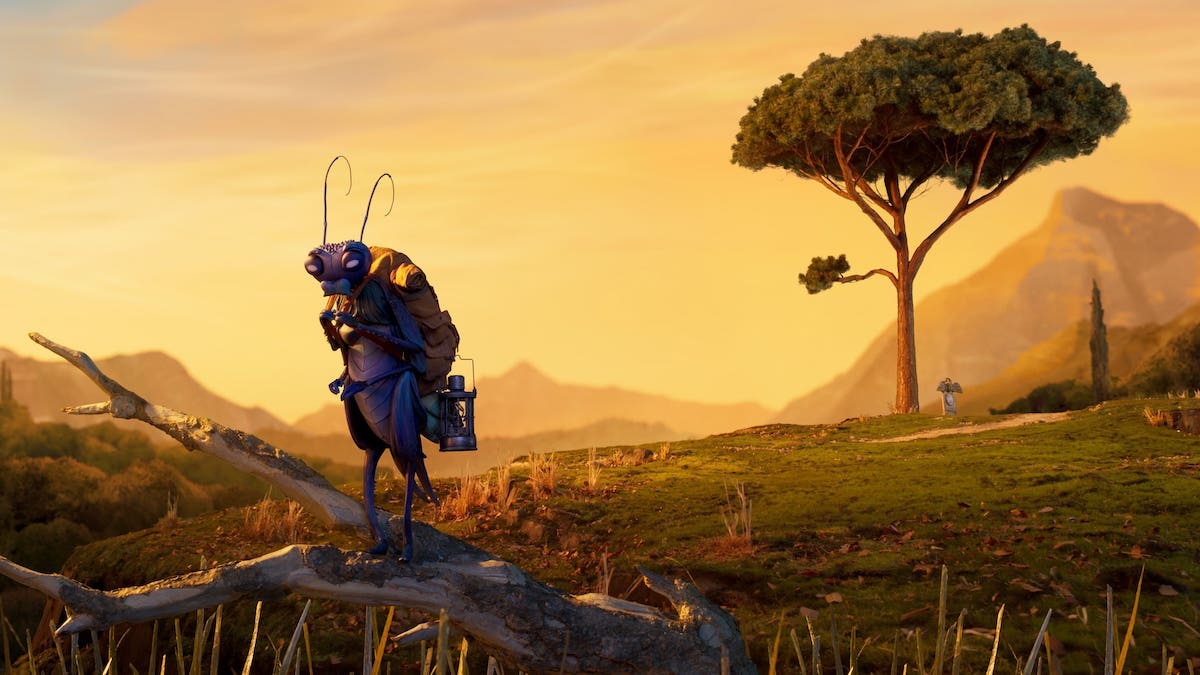
Although it remains a definitive classic, Walt Disney’s iconic adaptation obscured the legacy of Carlo Collodi’s groundbreaking literature. The Mouse House whittled away the more nightmarish elements of the source material and crafted a phantasmagorical fairy tale. However, Guillermo del Toro’s (Nightmare Alley) retelling is more thematically aligned with Collodi’s whimsical fable, thanks to the work of co-writers Mathew Robins (Crimson Peak) and Patrick McHale (Adventure Time). This Pinocchio is more faithful to the themes explored in the original story while adding its own harrowing twist by having Mussolini’s fascism as the backdrop to the story.
It’s simultaneously haunting and beautiful, and easy to understand why del Toro has stated during interviews that “it’s not a sanitised Pinocchio”. However, that doesn’t mean both children and adults won’t adore it. Between the darkest of moments, light-hearted humour can be found. The filmmaker cartoonishly mocks Mussolini at every chance he gets. Arriving at Count Volpe’s carnival in a ridiculously long car seems eccentric but it absolutely works. Ewan McGregor’s (Big Fish) provides some of the biggest laughs as Sebastian J. Cricket, and there’s a hilarious running joke that’s been frequently forgotten in most adaptations. While serving as a narrator, the eloquent purple insect builds a home inside Pinocchio’s chest to play the role of his conscience but is constantly getting squashed the moment he tries to advise Pinocchio. Del Toro embraces some meta-humour at Disney’s expense by crushing the resilient cricket almost every moment he attempts to sing! The pompous raconteur sighs “oh, the pain!” as frequently as Jonathan Harris on Lost In Space.
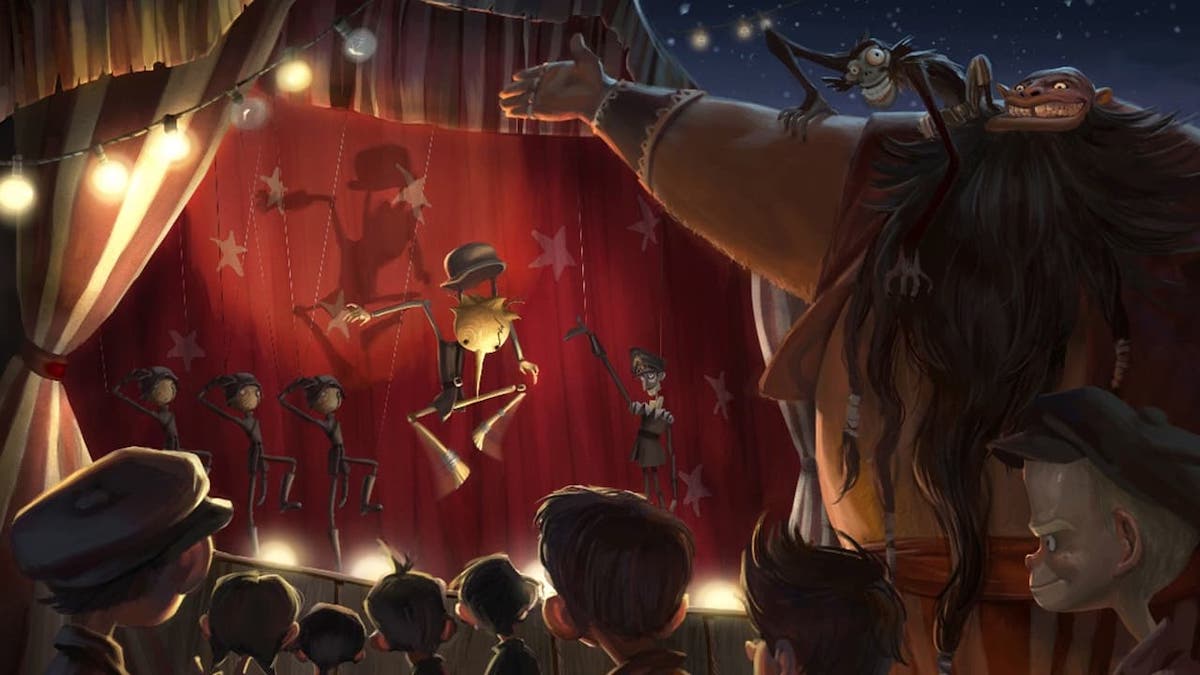
Pinocchio has been a long-gestating passion project for del Toro and his signature brand of macabre imagery is on full display. Co-director and veteran stop-motion animator Mark Gustafson (Fantastic Mr. Fox) spectacularly transforms del Toro’s imagination into physical reality. One can’t help but marvel at the magnificent craftsmanship of every character that inhabits this dark and whimsical realm. The intricate detail is truly majestic and the characterisation of each puppet’s movement is astonishing. Geppetto’s head is decorated with elaborately detailed curlicues of hair and the wrinkles on his weathered artisan hands are meticulous.
Meanwhile, the design of Pinocchio himself isn’t the blushing marionette most audiences commonly expect to see, Remaining faithful to Gris Grimly’s distinct illustrations, the puppet is a textured and thorny figure with organic blemishes of real wood. He’s held together with twisted nails and his nose sprouts branches and pine needles whenever he fails to tell the truth. By combining live-action filmmaking and traditional animation techniques, Gustafson and the incredible team at ShadowMachine deserve immense praise for fashioning a handcrafted fairytale that rivals contemporary animations including Coraline (2009) and Kubo and the Two Strings (2016).
Despite the radical change in format, del Toro manages to seamlessly implement many of his idiosyncrasies to blissful effect. The filmmaker’s presence can be felt throughout Curt Enderle’s (Isle of Dogs) wonderful production design. Count Volpe’s traveling circus evokes similarities to the carnival setting featured in Nightmare Alley (2022), while the watery realms of the whale’s shuddering organs evoke The Shape of Water (2017). Two particular characters Pinocchio encounters are influenced by ancient mythologies and del Toro’s familiar designs. Similar to The Angel of Death in Hellboy II: The Golden Army (2008), the benevolent blue Wood Sprite boasts an imposing pair of feathered wings adorned with eyes. While another eternal creature in the purgatorial afterlife resembles a chimera and is crowned with enormous horns. All of the characters designed are a worthy addition to the filmmaker’s mesmerising stable or creatures. Unlike most filmmakers, it’s evidently clear del Toro’s creativity isn’t compromised by the limits of animation. Pinocchio serves as an effective reminder that the filmmaker can ensnare the audience’s imagination with any medium.
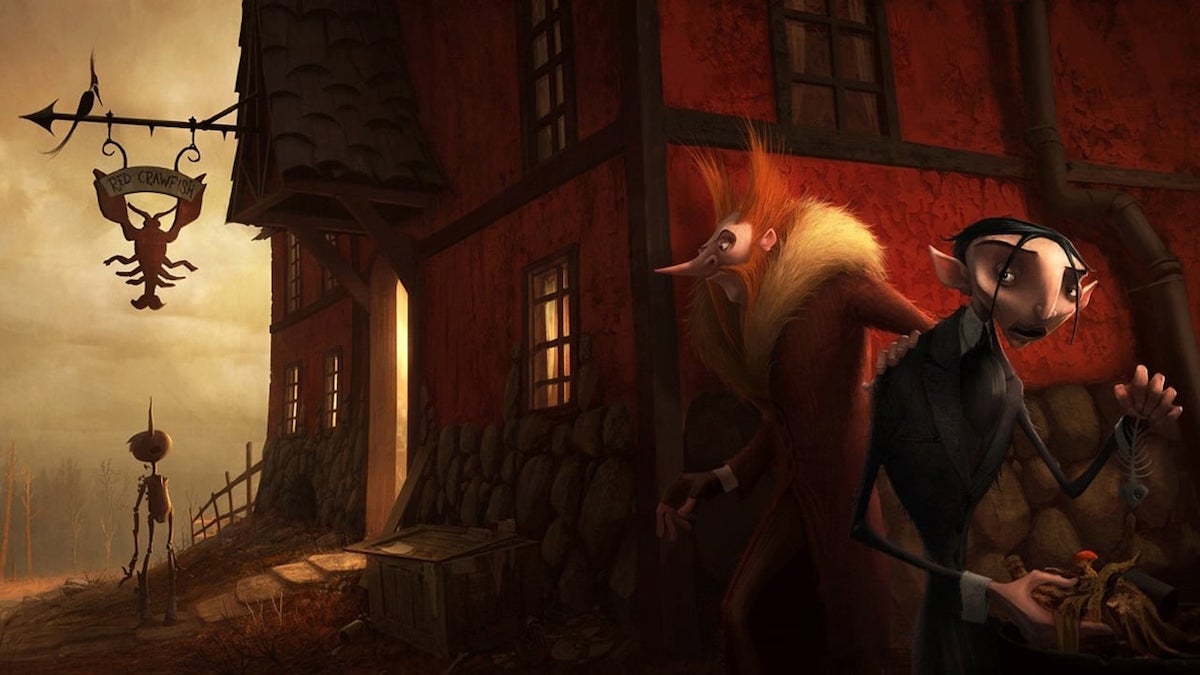
Pinocchio has been carved from the same pine tree as del Toro’s oeuvre and could easily be considered a spiritual sibling of The Devil’s Backbone (2001) and Pan’s Labyrinth (2006). Both those earlier supernatural tales unfolded against the cruel backdrop of war and explored the dangers of authoritarianism from a child’s perspective. However, perhaps the most incredible feat del Toro accomplishes is balancing the heavy existential themes with the gentility of a child’s curiosity. Beneath the morbid fixation on Christian symbolism and fascism is a poignant undercurrent about mortality. Pinocchio’s curiosity and hunger to experience the world makes him a valuable commodity to Count Volpe and Podestà. The unruly puppet becomes preoccupied with the exhilaration of being immortal rather than the excitement of being Geppetto’s son. Similar to Collodi’s original tale, Pinocchio’s journey acts as a moral lesson. During the surprisingly emotional conclusion, Pinocchio ultimately learns that being a “real boy” isn’t measured by obedience and faultless accomplishments. He understands what makes us human is appreciating the transient nature of life and the transcendent power of love. Del Toro successfully pulls this off without betraying the aspirational nature of the story.
Unfortunately, the only area where Disney’s shadow is inescapable is during the musical numbers. Alexander Desplat’s (The French Dispatch) score is suitably whimsical and each composition contains a beautiful melancholy. However, most of the original songs aren’t as memorable as Leigh Harline and Ned Washington’s classics “When You Wish Upon A Star” or “I Got No Strings”. Regardless of that shortcoming, Pinocchio is a charming delight and provides another reminder of why Guillermo del Toro is one of Hollywood’s most visionary filmmakers. While remaining somewhat faithful to Carlo Collodi’s classic children’s novel, it presents a masterfully distinct twist on the classic fable. With added darkness and pain, Pinocchio is a celebratory and infectious reminder of what it means to be alive.
USA • MEXICO • FRANCE | 2022 | 117 MINUTES | 1:85:1 | COLOUR | ENGLISH • ITALIAN • FRENCH

directors: Guillermo del Toro & Mark Gustafson.
writers: Guillermo del Toro, Mathew Robbins & Patrick McHale (based on the book by Carlo Collodi).
starring: Gregory Mann, David Bradley, Ewan McGregor, Christoph Waltz, Ron Perlman, Cate Blanchett, Tilda Swinton, Finn Wolfhard & John Turturro.
